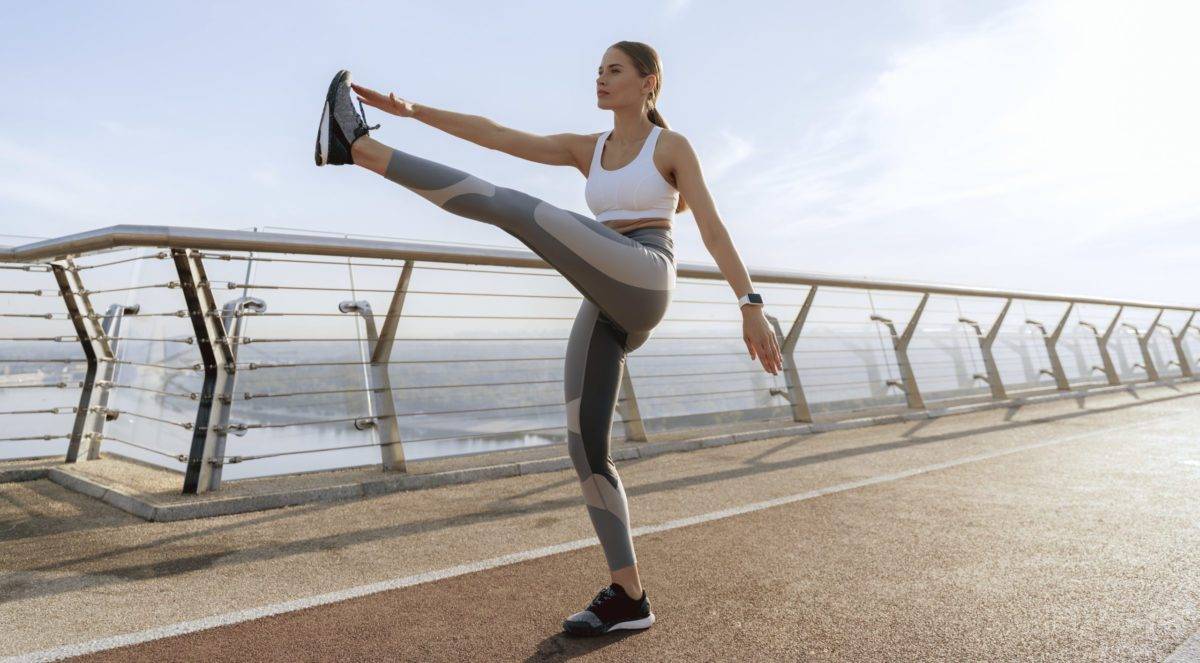By Alex MacPhee, RMT
4 Minute Read

To avoid or minimize the onset of DOMS, I recommend a good warmup and cool down pre and post-exercise.

Effective Warm-Ups
Your warm-up should primarily include dynamic stretching. Getting your muscles warmed up not only reduces the likelihood of soreness, but it also significantly reduces the chance of injury. An example of a good warmup for a run or leg workout can include running in place for 30-60 seconds, leg swings front to back and side to side, or body weight squats in brisk successions. It is important to gradually increase your heart rate and exertion levels. If you are planning on doing some sprints or a HIIT workout you should ensure your body feels adequately prepared.
What is Dynamic Stretching?
Dynamic stretching is a form of stretching that involves regular, repetitive movement to create the stretch in the tissues. Dynamic stretching uses the leverage of your limbs primarily to create a stretch, versus holding a still position for a period of time, as with static stretching. Some good examples of dynamic stretches are high knees to chest jogs, high kicks, butt kicks and light lunges with a twist. The stretches are very straight forward and the names themselves explain what you should do. For knee to chest, you can do this in a prone position or if you are comfortable, in a standing position. The stretch involves bringing your knee up to your chest and pulling inward. This stretch targets both your hamstrings and your glutes. High kicks are often referred to as zombie walks, which involves keeping your leg straight and kicking it forward as far as you can, comfortably. Butt kicks involve a light jog with emphasis on bringing your foot to your glutes and a lunge with a twist involves walking lunges with a twist to the opposite side of your front leg.

Proper Cool-Downs
A good cool-down should include keeping your body moving for another 3-5 minutes after you finish your workout. You should focus on regulating your breathing and taking deep breaths in order to deliver oxygen to your muscles which in turn will decrease tension and improve relaxation overall. During this time, you want to feel your heart rate coming down from the rapid rate during exercise. Your cool down should involve some static stretching, which helps improve your range of motion, decreases your risk for injury, decreases the potential of delayed onset muscle soreness and can alleviate any cramping, if present.
What is Static Stretching
Static stretching is a form of stretching that involves holding a single position for a period of 30 or so seconds. These stretches can include being in the seated, standing or laying position but you must hold the movement still in order to adequately stretch your targeted muscle. Some examples of static stretches include reaching for your toes, butterfly position, standing calf stretch and tricep stretch. The toe reach stretch can be performed in a seated position or a standing position. The seated position involves keeping your legs out straight and hinging at the hip to try to touch your toes whereas the standing position involves keeping your legs straight and reaching down toward your toes. It is important to ensure you are bending at the hip and not overstretching your back as this reduces the efficacy of the stretch. The butterfly position is performed in a seated position with the bottoms of your feet placed together in front of you. This stretch can be advanced by placing your elbows on your knees and pushing towards the floor. The standing calf stretch is performed by placing your toes up on a wall with your heel on the floor. To target your gastrocs you should lean your body toward the wall while maintaining a straight knee and to target your soleus you should perform the same position but with a slight bend in your knee. The triceps stretch involves reaching your hand overhead, almost to scratch your back, while taking the opposite hand to pull your elbow further back. All of these stretches should be held for approximately 30 seconds and should be performed 3 times.


